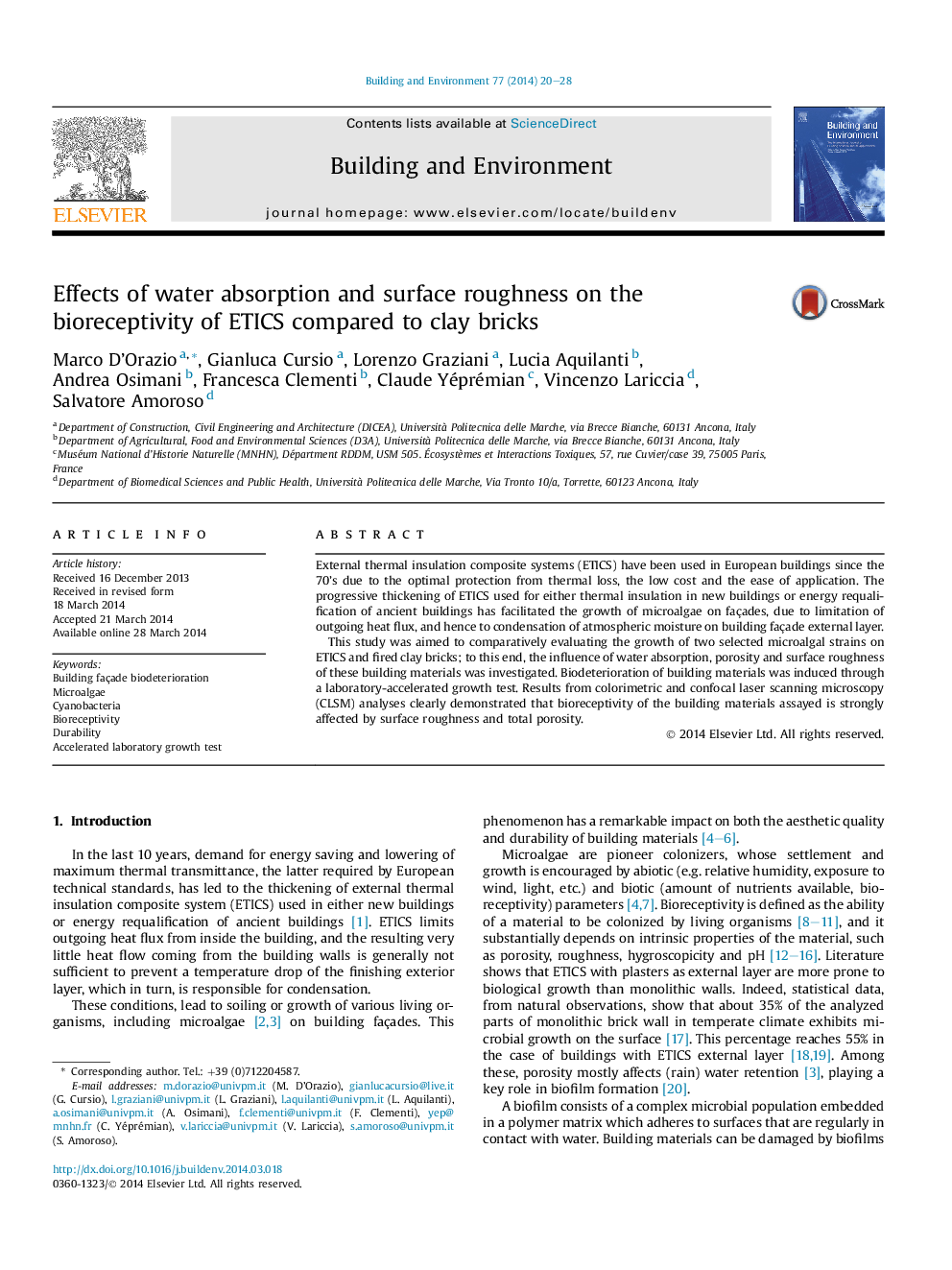| کد مقاله | کد نشریه | سال انتشار | مقاله انگلیسی | نسخه تمام متن |
|---|---|---|---|---|
| 248217 | 502553 | 2014 | 9 صفحه PDF | دانلود رایگان |

• Bioreceptivity of ETICS and clay bricks was evaluated and compared.
• Relationship between biofouling and intrinsic properties of building materials was found.
• Roughness and total porosity were found to play a key role in the microalgal growth.
External thermal insulation composite systems (ETICS) have been used in European buildings since the 70's due to the optimal protection from thermal loss, the low cost and the ease of application. The progressive thickening of ETICS used for either thermal insulation in new buildings or energy requalification of ancient buildings has facilitated the growth of microalgae on façades, due to limitation of outgoing heat flux, and hence to condensation of atmospheric moisture on building façade external layer.This study was aimed to comparatively evaluating the growth of two selected microalgal strains on ETICS and fired clay bricks; to this end, the influence of water absorption, porosity and surface roughness of these building materials was investigated. Biodeterioration of building materials was induced through a laboratory-accelerated growth test. Results from colorimetric and confocal laser scanning microscopy (CLSM) analyses clearly demonstrated that bioreceptivity of the building materials assayed is strongly affected by surface roughness and total porosity.
Journal: Building and Environment - Volume 77, July 2014, Pages 20–28